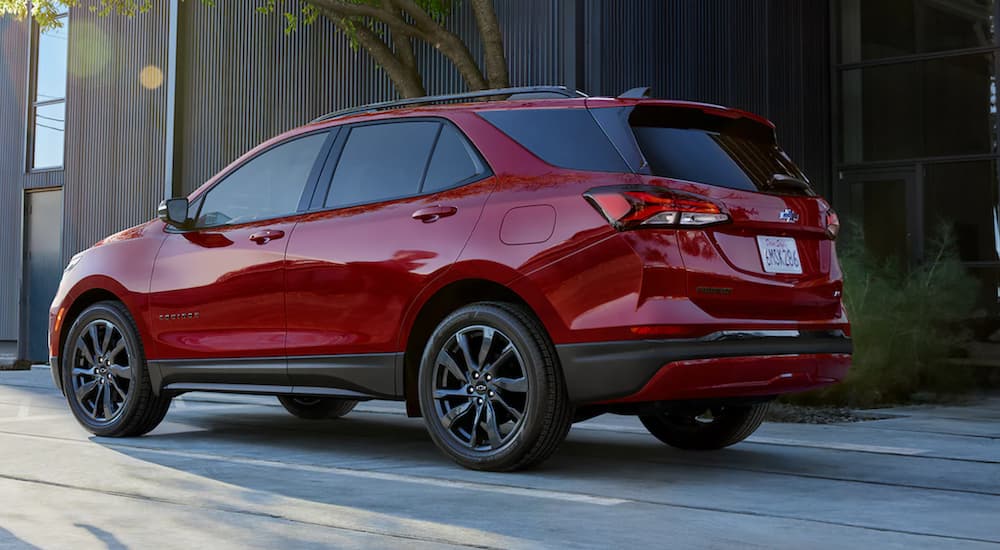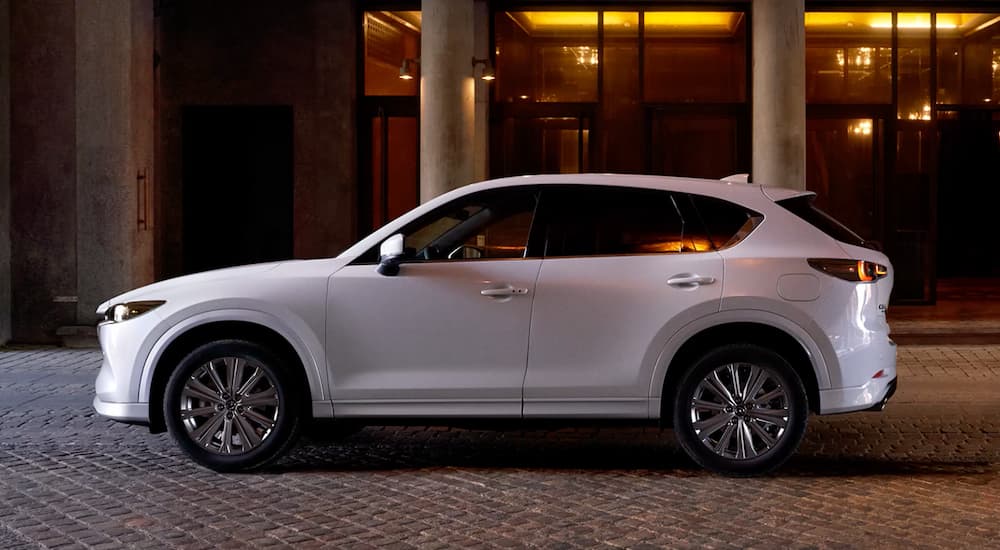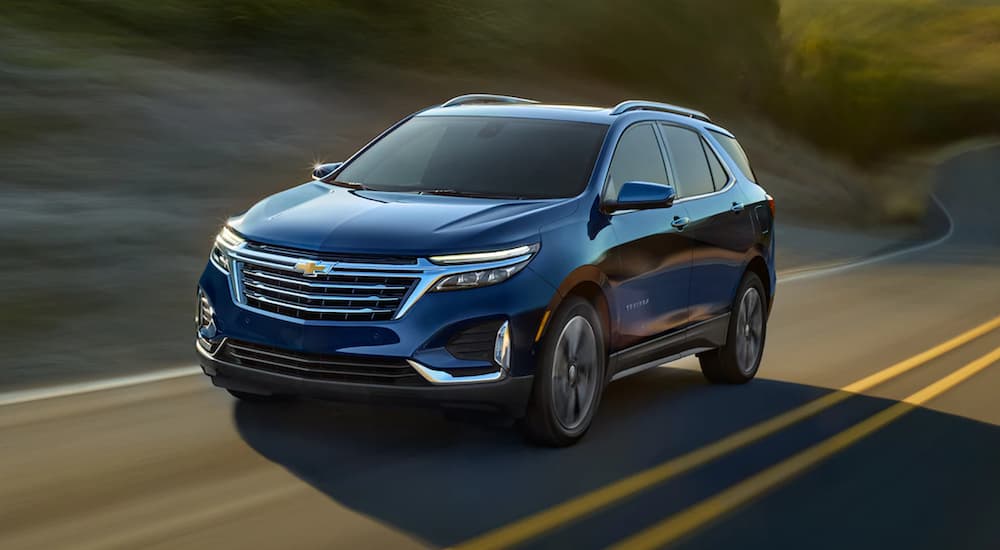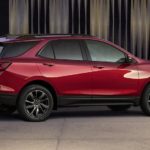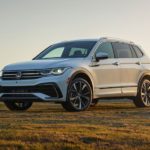Not too long ago, some English blokes on a motoring show in the UK joked that it is virtually impossible to tell one crossover SUV from another. And while that may have been true in the recent past, today there is more variety—for example, the 2022 Chevy Equinox vs 2022 Mazda CX-5. In the world of compact SUVs, you’d be hard-pressed to find more different vehicles than these two, not just in form but in function.
The only real similarities are that each vehicle is their company’s respective bestseller, and both cost around the same. This past year, CX-5 (MSRP $25,900) sold 168k for Mazda and Equinox (MSRP $25,800) sold 165k for Chevy. And that’s where the similarities end.
Today, we’ll examine the major differences between these two cars, explain why they are perfect antonyms for one another, and why that helps you, the compact crossover buyer, decide which you prefer. Let’s start off with style.
Style
Both vehicles have a refreshed look for the current model year, but they still retain the original essence that made them recognizable. CX-5 is still the sporty, man-about-town it’s always been. Sticking with the same winning design since the second generation began in 2017, the CX-5 has some notable redesigns. The bumper was restyled in 2021 with new headlights, and the interior saw updated seating and wireless charging stations not previously offered. The design continues to stand out as a modern SUV, emphasizing the sport.
Meanwhile, over at the soccer field, the Equinox is sporting what the industry likes to call a “mid-cycle refresh.” Essentially, this means that there haven’t been any drastic changes to the frame or drivetrain—instead, the styling gets a nice polish as the generation rounds out its time.
Speaking of generations, the Equinox is well into its third iteration, and it’s easy to see why it has retained its popularity. The new, intentionally angular front grill gives the Equinox a far more aggressive stance, as do the rear end tail lamps. More streamlined than any of its predecessors, you can tell that Chevy is venturing into an era of bold compact car design that is far removed from the box-on-wheels days of yore.
So why bother talking about style? Style is an important factor in car buying, especially in a segment as crowded as compact crossovers. The CX-5 is the more refined of the two, which is deliberate on Mazda’s end. They’ve marketed to an upscale clientele while still managing to keep prices relatively low. Meanwhile, Equinox has been steady and reliable like the family hound, with not much in the way of refinement until very recently with this third generation. This segues us nicely into the interior.
Interior
You want to enjoy the driving experience of your car, but you also want to be comfortable. In terms of refinement, the CX-5 feels luxurious even at its base level. In the S trim you get 6-way manual adjusted drivers seats, a leather wrapped steering wheel and gear shift, and cloth trimmed seats. As with all models, increased trims mean upscale interiors. At the top of the CX-5 pack is the Turbo Signature, in which you’ll get keyless entry, remote start, paddle shifters on the steering wheel, an 8-way power adjustable driver’s seat with 2-position memory, heated front seats trimmed in Caturra Brown Nappa leather, a leather wrapped steering wheel and gear shift, and layered wood trim.
All CX-5 trim levels come standard with a 10.25’’ full-color display integrated with Apple CarPlay and Android Auto. The 10.25’’ infotainment screen is not a touch screen but is controllable with a multifunction toggle at the base of the gear shift. Bluetooth is also standard across all trim levels.
By contrast, the base model LS Equinox comes with a 4-way manual, premium cloth trimmed driver’s seat, a chrome-trimmed shifter, single-zone climate control, 6-speaker audio system, and keyless start. Bumping up to the Premier trim brings Jet Black perforated leather seats, dual-zone climate control, an 8-way power-adjustable driver’s seat, and an available 7-speaker Bose audio system. All trims also come standard with GM’s Active Noise Cancellation, which absorbs exterior noise, such as wind and drivetrain whine, to make for a quieter, more comfortable interior.
Touchscreens are available on all trims, with a 7’’ touch screen for the lower LS and RS models and an 8’’ touchscreen with available navigation on the Premier. Common functions on most modern vehicles such as Bluetooth, Apple Carplay, and Android Auto are standard throughout the lineup.
Where legroom is concerned, the CX-5 has the Equinox beat. Despite being a whole 3’’ shorter, CX-5 is 180.10’’ vs 183.10’’ for Equinox, CX-5 boasts an extra inch of front legroom for the driver: 41.0’’ to Equinox’s 40.0’’. Still, the Equinox makes up the difference in storage capacity. With the rear seats folded down, cargo capacity in the Equinox jumps from 29.9 cu-ft to 63.9 cu-ft. Over in the CX-5 it changes from 29.1 cu-ft to 58.1 cu-ft. Sacrificed front legroom for more storage space—seems like a decent trade-off unless you’re a giant.
Both crossovers can seat up to 5 passengers comfortably, with rear legroom averaging in at 39’’. Passenger and cargo versatility for the Equinox comes in the form of a 60/40 flat-folding rear seat, while you’re looking at a 40/20/40 one-touch fold-down rear seat in the CX-5. Both are configured to suit your needs, whatever the occasion calls for, within reason. Remember, these are compact vehicles.
The Driving Experience
So now we get into the meat of it—the actual driving experience. The CX-5 has two engine options: a 2.5L 16-valve 4-cylinder OR a 2.5L Dynamic Pressure Turbo. The standard engine puts out 187 hp and 186 lb-ft of torque. Meanwhile, the Turbo on 87 octane fuel puts out 227 hp and 310 lb-ft of torque, and 256 hp and 320 lb-ft of torque on 93 premium octane.
Mazda takes pride in maintaining an active, sporty feel for all of its vehicles, and the CX-5 is no exception. Tight steering and zippy acceleration lead to a fun driving experience that’ll make you forget you’re driving an SUV.
The Equinox has one engine option: a 1.5L Turbo 4-cylinder mated to a 6-speed automatic transmission. You’re not going to have as much fun driving an Equinox as you are a CX-5, but that’s okay. If you’re more the person who just wants to get from A to B without any frills, Equinox is the way to go. Acceleration is modest, and steering is looser than in the CX-5—again, it’s dependent upon the type of driver you are.
Fuel economy-wise, you’re looking at a pretty even split between the two—all CX-5s come standard with i-ACTIV all-wheel drive (AWD). Milage on the standard 2.5L is 24 MPG in the city and 30 MPG on the highway, while the Turbo is 22 MPG in the city and 27 MPG on the highway.
Equinox, by contrast, comes standard with front-wheel drive (FWD) with available AWD as an option. Fuel efficiency for the FWD model is 26 MPG in the city and 31 on the highway, while AWD is 25 MPG for the city and 30 MPG for the highway. Not too much fuel economy is sacrificed on either vehicle with the AWD option, which is a drivetrain to consider if you live somewhere where it snows.
On the safety front, both Equinox and CX-5 come standard with their respective manufacturer’s automatic emergency braking, lane keep assist, forward collision alerts, and review HD cameras. Equinox has OnStar connectivity, which is standard across all GM brands.
One Final Question
So, as you’ve seen, these are two different SUVs specifically marketed to two different audiences. CX-5 is appealing to a younger, urban crowd with an eye for refined interiors and sporty driving, while Equinox is happy in its familial appeal but can also pack a punch when driving calls for it. The only question that remains is: which driver are you?
